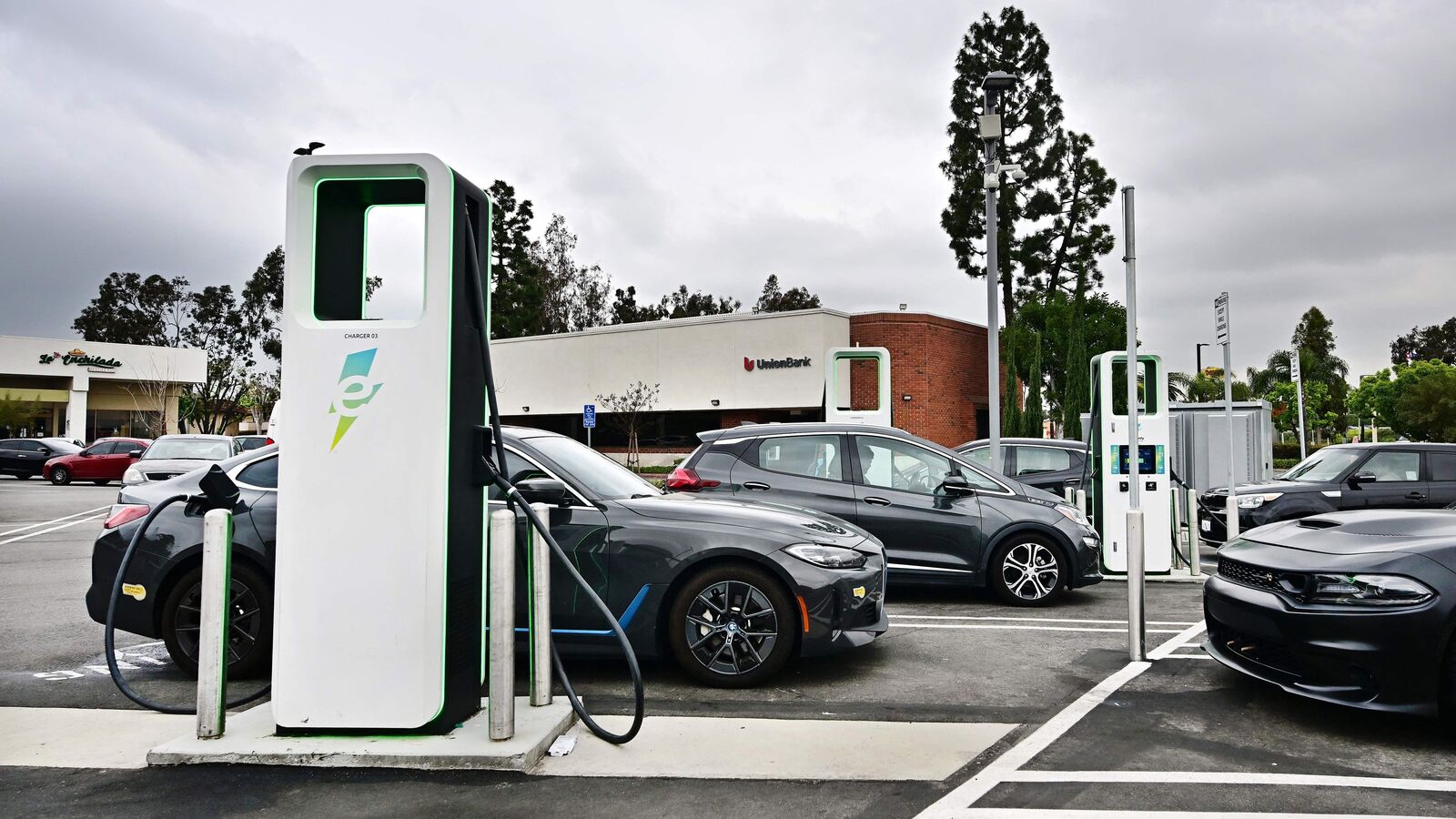“Today’s action will accelerate our continued transition to a clean automotive future, confront the climate crisis head-on and improve air quality in communities across the country,” EPA Administrator Michael Reagan said at a ceremony outside the agency’s Washington headquarters.
Still, questions remain over automakers’ ability to meet fleet-wide limits on carbon dioxide, soot and smog-forming pollution. The Alliance for Automotive Innovation warns that factors outside the industry’s direct control — including the buildout of the U.S. power grid, charging stations and battery manufacturing — will play a huge role in determining the pace of EV adoption.
“The EPA’s proposed emissions plan is aggressive by any standard,” said John Bozzella, the coalition’s head. “To bring about this massive and unprecedented change in our automotive market and industrial base, a lot has to be done to be successful.”
Under the proposal, car and light truck fleet CO2 emissions would be capped at 82 grams per mile by the 2032 model year, a 56 percent reduction from the 2026 model year standard. About 7.3 billion tons of carbon dioxide emissions would be avoided by 2055, which the EPA says is equivalent to eliminating all greenhouse gas emissions from the entire US transportation sector within four years.
Also read: Joe Biden’s new U.S. emissions rules aim to slash billions worth of oil demand
Regan emphasized that performance-based standards give automakers options to comply and are not meant to “drive any particular technology out of the market.” But electric vehicles that don’t produce tailpipe pollution are seen as the main path to compliance for the auto industry, and critics have slammed the proposal as a de facto electric vehicle mandate that limits consumer choice.
Chet Thompson, president of the American Fuel and Petrochemical Manufacturers Association, said the EPA’s plan would “effectively ban gasoline and diesel vehicles.”
That will require a significant rise in EV penetration, from single-digit market share in the U.S. today — more than many independent analysts have forecast. For example, BloombergNEF predicts that US EV penetration will reach 52% by the end of the decade, well below the 67% envisioned in the proposal.
White House national climate adviser Ali Zaidi said a surge in federal spending on charging stations and tax incentives for electric vehicles, as well as automakers’ plans to sell more zero-emission models, supported the proposed standards.
Zaidi said the projections simply cannot keep up with the massive investments unleashed by the Inflation Reduction Act and other federal laws that are rapidly changing what is likely to happen. “The bet is on the ingenuity of American workers and American industry to continue delivering products that will help us lead the world in a clean energy economy.”
The EPA predicts benefits of up to $1.6 trillion by 2055 are associated with reduced premature deaths, cardiovascular disease, asthma exacerbations, heart attacks, and reduced lung function exacerbated by pollution, which vary with demand And suppressed. The measure would reduce oil demand by at least 17 billion barrels by 2055.
The plan has drawn criticism from some oil industry allies and Capitol Hill Republicans who say it will deepen U.S. reliance on China for key minerals used in electric vehicles.
Republican Senator Shelley Moore Capito of West Virginia accused the administration of advancing “misguided emissions standards” without considering ongoing supply chain challenges, a lack of charging infrastructure or mines’ decade-long permitting times.
Critics accuse the EPA of overestimating the long-term benefits while ignoring the higher short-term costs, which could encourage Americans to hold on to older cars for longer.
“This is yet another example of how President Joe Biden is using what he calls his ‘climate agenda’ to dictate how people live,” said Rep. Cathy McMorris Rogers, R-Washington, chair of the House Energy Committee. , people will be forced to pay more for cars they cannot afford. “
While EV prices are falling, cars still come with a premium to buy. Corey Cantor, senior associate for electric vehicles at BNEF, said the key to getting there would be “if automakers get bought in” and “upfront price parity for EVs”.
The EPA aims to finalize the standards a year from now.
Some EV makers and environmentalists had encouraged the government to accept more aggressive targets and extend the requirement until 2035. By then, many analysts said sales of traditional gasoline-powered vehicles would have to end to meet net-zero emissions targets by mid-century, as vehicles remain on the road long after they leave the point of sale.
Chris Nevers, senior director of environmental policy at Rivian Automotive Inc., said the proposal’s headline goals represent “realistic goals.” Rivian “will continue to support the strongest standards through our products and our advocacy.”
These demands are important to Liz Hurtado, an activist who co-leads EcoMadres, a project of Moms Clean Air Force to protect Latino children and families from air pollution and climate change. Hurtado highlighted the potential health benefits at an EPA event on Wednesday.
Exhaust pollution disproportionately affects people of color, and “we’ve tolerated environmental injustice in this space for a long time,” Hurtado said. “Today, we are setting a new standard for health equity as we advance solutions to the climate crisis.”
First published date: April 13, 2023 at 08:16 AM CST
https://auto.hindustantimes.com/auto/electric-vehicles/joe-biden-pushes-hard-for-evs-to-fast-track-toughest-ever-emission-curb-in-us-41681353636937.html
